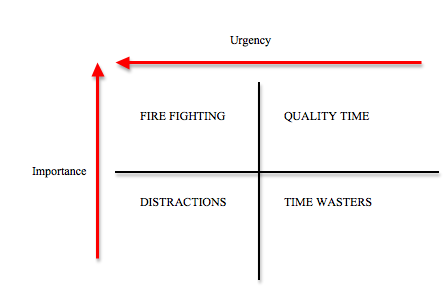The difference between a good and a bad leader may be obvious, but when it comes to assuming the mantle of leadership, leaders are made, not born. When management and leadership is not routinely taught, intensivists benefit from hearing from experienced leaders such as Dr. Niall Ferguson, Head of Critical Care Medicine at the University Health Network and Mount Sinai Hospital, and Associate Professor of Medicine and Physiology at the University of Toronto, who shared his leadership lessons at the 37th International Symposium on Intensive Care and Emergency Medicine, which met in Brussels 21-24 March 2017.
See Also: White Coats in the Boardroom
Leadership is not about having all the answers, emphasised Ferguson. Leadership is about listening, inspiring and empowering. It’s about stepping out of your comfort zone and taking risk to create reward. Leadership is the capacity to transform vision into reality. A true leader is secure in creating a framework that encourages others to tap into their own skills and ideas and freely contribute to the whole of the project. Leadership means unlocking the potential of a group of people, and maintaining tension between your own vision and being open to improving/changing it through other’s input. A leader should not don’t flip-flop and should stick to their principles, he advised.
Leadership takes dedicated time, summed up in this figure.

People care more about transparency and process than they do about outcome, said Ferguson. Make governance process your friend, be transparent and communicate like mad.
When starting on a strategic plan process, identify the burning platform, and persuade others that maintaining the status quo is not workable. A good strategic plan engages stakeholders, keeps you focused and calm, prevents pushback, and ensures it is possible. Good data backs this up.
Appreciative inquiry as a tool means conducting a root cause analysis of good aspects, and using what is working to fix what’s not. Integrative thinking is taking two opposite or seemingly incompatible positions and listing positive aspects of both. Following that you create integrative new solutions to capture the best of both worlds. Get people to list good points about a position they disagree with, and consider designing a perfect system to achieve the opposite result.
Ferguson quoted Tom Madine:
Managing editor, ICU Management & Practice
See Also: White Coats in the Boardroom
Leadership is not about having all the answers, emphasised Ferguson. Leadership is about listening, inspiring and empowering. It’s about stepping out of your comfort zone and taking risk to create reward. Leadership is the capacity to transform vision into reality. A true leader is secure in creating a framework that encourages others to tap into their own skills and ideas and freely contribute to the whole of the project. Leadership means unlocking the potential of a group of people, and maintaining tension between your own vision and being open to improving/changing it through other’s input. A leader should not don’t flip-flop and should stick to their principles, he advised.
Leadership takes dedicated time, summed up in this figure.

Interpersonal Leadership
Leadership starts with you, said Ferguson. Start with introspection: know yourself, continue to be yourself, avoid “imposter syndrome”and don’t doubt yourself. Recognise that a lot of leadership lies in communication and building interpersonal relationships, he added.Challenging Conversations
Ferguson shared his tips for dealing with the inevitable challenging conversations:- Ask why instead of getting irritated
- Balance inquiry and advocacy: “I have a perspective worth sharing (advocacy)” and “However, I am certain I’m missing something (inquiry)
- Be aware of different points of view of the same issue
People care more about transparency and process than they do about outcome, said Ferguson. Make governance process your friend, be transparent and communicate like mad.
Techniques for Change
Ferguson outlined tools to deal with change, including strategic plans, experimentation with demonstration projects and thinking techniques.When starting on a strategic plan process, identify the burning platform, and persuade others that maintaining the status quo is not workable. A good strategic plan engages stakeholders, keeps you focused and calm, prevents pushback, and ensures it is possible. Good data backs this up.
Appreciative inquiry as a tool means conducting a root cause analysis of good aspects, and using what is working to fix what’s not. Integrative thinking is taking two opposite or seemingly incompatible positions and listing positive aspects of both. Following that you create integrative new solutions to capture the best of both worlds. Get people to list good points about a position they disagree with, and consider designing a perfect system to achieve the opposite result.
Ferguson quoted Tom Madine:
“Leadership styles differ, but at the core, good leaders make the people they are leading accomplish more than they otherwise would. The most effective leaders do this not through fear, intimidation or title, but rather by building consensus around a common goal”Claire Pillar
Managing editor, ICU Management & Practice
Latest Articles
Leadership, change, Thinking, ISICEM 2017, #ISICEM17
The difference between a good and a bad leader may be obvious, but when it comes to assuming the mantle of leadership, leaders are made, not born. When man...









